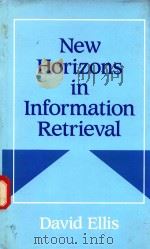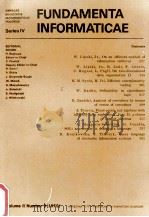《Handbook of Legal Information Retrieval》
| 作者 | 编者 |
|---|---|
| 出版 | Elsevier Science Ltd |
| 参考页数 | 580 |
| 出版时间 | 1984(求助前请核对) 目录预览 |
| ISBN号 | 9780444875761;044487576X — 求助条款 |
| PDF编号 | 812919008(仅供预览,未存储实际文件) |
| 求助格式 | 扫描PDF(若分多册发行,每次仅能受理1册) |
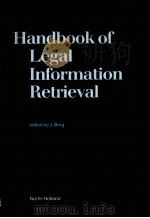
PART Ⅰ: Legal decision and communication processes1
1Context of retrieval systems3
2Decision processes6
2.1 Introduction6
2.2 Initiation7
2.3The facts of the case10
2.3.1 The probable facts of the case10
2.3.2 The proven facts of the case11
2.4 Legal sources13
2.5 The retrieval process18
2.6Interpretation: Relationsbetween sources and norms26
2.6.1 Relevancy of sources weight of arguments26
2.6.2 Words and uncertainty30
2.6.3 Harmonization34
2.7 The normative interval37
2.8 The result and feedback from the result40
2.9 Standards for legal information retrieval44
3Communication processes50
3.1 Introduction50
3.2The editorial process: Data base selection52
3.2.1 Introduction52
3.2.2 Selection54
3.2.3The data base59
(1) Representativity59
(2) Objectivity63
(3) Updating66
3.3The editorial process: Document design69
3.3.1 Documents69
3.3.2Three typical forms of documents74
(1) Indexes74
(2) Abstracts79
(3) Authentic text83
3.3.3Functional performance84
(1) Introduction84
(2) The retrieval function86
(3) The relevance function93
(4) The source function97
(5) T he current awarness function100
3.3.4 Conclusions102
3.4The information system105
3.4.1 Elements of the information system105
3.4.2Information - and on what106
(1) The concept of information106
(2) The subject of information109
3.5Using the information system113
3.5.1 User-constructed information systems113
3.5.2Availability factors115
(1) Introduction115
(2) Pragmatic and formal availablity factors117
(3) User research on availability factos: An example118
3.5.2The cost curve120
(1) Area of interest -area of documentation120
(2) The local data base: The concept of coverage122
(3) Factors determinig the cost curve125
(4) Availability discrimination129
3.5.4Active and passive use ofinformation systems131
(1) Introduction131
(2) Functional performance133
(3) Delegation135
3.5.5 Technological change and costs137
PART Ⅱ: Text retrieval141
4Anatomy of text retrieval143
4.1Introduction143
4.1.1 Defining an informationretrieval system143
4.1.2 Sketch of an informationretrieval system145
4.1.3 Different user situations148
4.2Characteristics of text retrieval151
4.2.1 Document retrieval151
4.2.2 Full text retrieval151
4.2.3 Interest retrieval152
4.3 The retrieval process154
4.4 Choosing the data base157
4.5Retrieval strategies160
4.5.1 Introduction160
4.5.2The retrieval function160
(1) Simulating relevanceassessment160
(2) Identity functions161
(3) Nearness functions164
(4) Combinations of identityand nearness functions173
4.5.3Iterative techniques175
(1) Introduction175
(2) Relevance feedback176
(3) Local metrical feedback177
(4) Computerized processing of search requests snowball functions178
(5) A preprocessor to textretrieval systems178
4.6Aids in formulating search requests180
4.6.1 Formulating the request180
4.6.2Examples of different aids181
(1) Truncation181
(2) Mask functions182
(3) Automatic stemming182
(4) Thesaurus182
4.6.3 Choosing the level of performance183
4.7Examples of file structures185
4.7.1 Inverted file structure185
4.7.2 Vector based systems189
4.8 Appendix I: Some important textretrieval systems190
4.9Appendix II: The concept of relevance197
4.9.1 Types of relevance: Formal,content, and subjectiverelevance197
4.9.2 The nature of relevance: Absolute and relative relevance199
4.9.3 The grading of relevance: Grading by degrees or binary grading?199
4.9.4 The relevance concept as used in this book202
5Research regarding the performance and design of text retrieval systems204
5.1 Introduction204
5.2General research207
5.2.1 The Aslib-Cranfield projects: 1960-1966207
5.2.2 The SMART project: 1964-1983209
5.2.3 The MEDLARS evaluation: 1966-1967214
5.2.4 The"Comparative SystemsLaboratory Experiments"Projects: 1963-1968217
5.3Development and design of text etrieval systems218
5.3.1 The CONDOR project: 1973-1981220
5.3.2 The SPIRIT system222
5.4Research regarding legal systems226
5.4.1 The joint ABF/IBM project: 1966-1967226
5.4.2 The Oxford experiments: 1963-1965, 1976-1982227
5.4.3 The Responsa project: 1967-1983230
5.4.4 The WIENER SYSTEM233
5.4.5 The MAJUS program:1974-1977235
5.4.5 The NORIS research program:1972-1983236
PART Ⅲ: International survey of legal information retrieval247
6A brief history of computerized information retrieval249
6.1 Introduction249
6.2Background251
6.2.1 Libraries and indexes251
6.2.2 Jurimetrics253
6.3The initiative257
6.3.1 The Pittsburgh project257
6.3.2 The Aspen Systems Corporation260
6.3.3 The Oxford experiments264
6.4Aprofusion of projects264
6.4.1 Introduction264
6.4.2 Law Research Services,Inc265
6.4.3 RIRA: Reports and Information Retrieval Activity268
7Current information systems272
7.1International organizations272
7.1.1 Introduction272
7.1.2 Intergovernmental Bureau of Informatics273
7.1.3 The Council of Europe274
7.1.4 The European Communities278
7.1.5 EURONET DIANE285
7.1.6 World Health Organization286
7.1.7 INTERDOC286
7.2 Argentina288
7.3Australia289
7.3.1 Introduction289
7.3.2 The SCALE project290
7.3.3 Future developments in Australia292
7.4 Austria294
7.5Belgium298
7.5.1 Introduction298
7.5.2 CREDOC299
7.5.3 JUSTEL305
7.5.4 Samsom307
7.6 Brazil309
7.7Canada311
7.7.1 Introduction311
7.7.2 Quebec:from DATUM to SOQULJ314
7.7.3 From QULC/LAW to QT.Systems322
7.7.4 Carswell Legal publicaions330
7.8Denmark331
7.8.1 Introduction331
7.8.2 DC-jura333
7.8.3 DATA LEX335
7.9 Finland337
7.10France341
7.10.1 Introduction341
7.10.2 IRETIJ345
7.10.3 CEDIJ350
7.10.4 SYDONI356
7.10.5 JURIS-DATA359
7.10.6 LEXIS360
7.10.7 Specialized or regional information systems361
7.11Germany367
7.11.1 Introduction367
7.11.2JURIS373
(1) Introduction373
(2) JURIS pilot system376
(3) Extended JURIS system382
7.11.3 DATEV384
7.12 Greece388
7.13Holland390
7.13.1 Introduction390
7.13.2 Kluwer JURID391
7.13.3 The PARAC - Vermande project393
7.14 Ireland395
7.15 Israel396
7.16Italy397
7.16.1 Introduction397
7.16.2 ITALGIURE399
7.16.3 Istituto per la documentazione giurdica408
7.16.4 Camera dei deputati409
7.17 Japan412
7.18 Luxemburg413
7.19Mexico414
7.19.1 Introduction414
7.19.2 UNAM-JURE414
7.20 New Zealand416
7.21Norway418
7.21.1 Introduction418
7.21.2 Lawdata422
7.22 Spain427
7.23Sweden429
7.23.1 Introduction429
7.23.2 From RI to Raettsdata431
7.24 Switzerland440
7.25United Kingdom441
7.25.1Introduction441
(1) The STATUS project441
(2) The Society for Computers and Law443
(3) Universities and research institutions445
(4) A note on unreported cases449
7.25.2 LEXIS452
7.25.3 EUROLEX456
7.25.4Prestel services461
(1) Infolex461
(2) Lawtel462
7.25.5 Northcrn lreland-and the BTRD systems464
7.26United stathcrn of America467
7.26.1 Lntroduction467
7.26.2 From LlTE to FLITE473
7.26.3 JURIS:Justice RetrievaI and Inquiery system476
7.26.4 LEXIS484
7.26.5 WESTLAW497
Literature505
Alphabctical index533
Index to figures and tables57
Fig 3/1 - Relations between the data bases of three different information systems with identical documentation areas57
Fig 3/2 - Relations beweenpublication ratio and representativity62
Fig 3/3 - Average recall-precision curves for three different types of documents92
Fig 3/4 - Relevance assessment based on abstracts96
Fig 3/5 - Document types and system functions102
Fig 3/6 - Document design and system functions103
Fig 3/7 - Causes for missing information119
Fig 3/8 - Typical cost curve for use of information services in an average case - elbow indicating "local data base"123
1984《Handbook of Legal Information Retrieval》由于是年代较久的资料都绝版了,几乎不可能购买到实物。如果大家为了学习确实需要,可向博主求助其电子版PDF文件(由 1984 Elsevier Science Ltd 出版的版本) 。对合法合规的求助,我会当即受理并将下载地址发送给你。
高度相关资料
-

- INFORMATION RETRIEVAL A Critical View
- 1967 Thompson Book Company
-

- INFORMATION RETRIEVAL Computational and Theoretical Aspects
- 1978 ACADEMIC PRESS
-

- HANDBOOK OF LEGAL MEDICINE
- 1956 THE C.V.MOSBY COMPANY
-
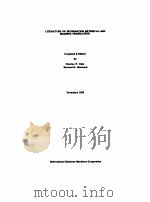
- LITERATURE ON INFORMATION RETRIEVAL AND MACHINE TRANSLATION
- 1962 INTERNATIONAL BUSINES MACHINES CORPORATION
-

- VOCABULARY CONTROL FOR INFORMATION RETRIEVAL
- 1972 INFORMATION RESOURCES PRESS
-

- POPULAR HANDBOOK OF MUSICAL INFORMATION
- AUGENER LIMITED
-

- HANDBOOK OF LEGAL MEDICINE FIFTH EDITION
- 1979 THE C.V.MOSBY COMPANY
-
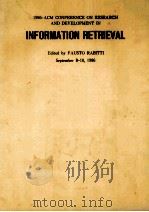
- INFORMATION RETRIEVAL
- 1986 PISA-ITALY
-

- INFORMATION RETRIEVAL
- 1973 AUERBACH Publishers Inc
-

- INFORMATION RETRIEVAL Second Edition
- 1979 Butterworth & Co Ltd
提示:百度云已更名为百度网盘(百度盘),天翼云盘、微盘下载地址……暂未提供。➥ PDF文字可复制化或转WORD



